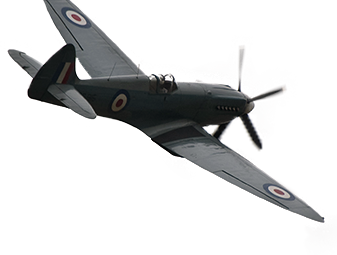The Sad Story of the Seawind 3000 N8UU
7 Jan 22
20 Comments
This post is no longer active as it is out of date. I’ve left it here so that the comments remain available.
The sad story of the Seawind 3000 is fully revised and included as a part of Pilot Error.
Category:
PE








Well, it is only fair to say that my following comments are based on only half the story, but from what I read I think that:
– The new owner was unfamiliar with this type of aircraft.
– There was a substantial time gap between agreeing to purchase the aircraft (paying his initial deposit) and the eventual collection of it.
– The seller had bought some items for the aircraft, but it is unlikely that this included proper, regular maintenance.
– The seller had not provided the necessary documentation, such as technical logs (if at all extant, as this was a privately owned aircraft and probably registered in the “experimental” category.
– The aircraft had been shoddily built by the first owner.
– The buyer bought a “lemon”.
– The aircraft was probably not really in an airworthy condition (see point 3).
– The buyer (see point one) did not have sufficient recent flying experience to embark on the planned trip and was unable to cope with the eventualities that came up.
– In spite of a substantial number of warnings, resulting in incidents, that all was not well, the buyer nevertheless pressed on with his flight.
– The buyer was under increasing time-, and probably also financial pressure, never a good proposition for a safe journey.
I can go on, but you will get my drift.
“getmehomeitis” is entirely understandable – you want the thing back at your home airfield, where you can take a break in the day’s work and go home for real food and bed rather than eating and sleeping on-site away from your family. But it could easily have been fatal here.
The two biggest red flags for me reading through this were (a) the condition of the aircraft on acceptance (clearly Not As Described, and if this is what the previous owner is admitting to…) and (b) the incident pilot’s mis-installing of the servo trim motor, implying he’s not really familiar enough to be doing this kind of repair.
I’ll admit it, there’s a part of me that almost admires the incident pilot’s persistence in the face of adversity. But then I reflect on how much of that adversity was self-inflicted. After the second emergency, if not the first, the rational play would have been to get a qualified Airframe & Powerplant Mechanic looking at the airplane, even if that meant taking a commercial flight home and making arrangements to pick up the airplane later. that would’ve been an expensive undertaking, but it probably would have beaten handily the outcome we got.
This story is also a testament to the power of “gethomeitis” – or what the NTSB calls “plan continuation bias”. Once we decide on a plan, it’s incredibly difficult to tossed that plan out the window. In this case, the cost of that difficulty was the loss of the airplane. The incident pilot is fortunate that that was the only cost.
I don’t feel too bad for him — the man actually did get the several decades of flying experience that he planned and paid for.
He just crammed it all into one flight.
Whenever I read something like this, it makes me wonder about all the close calls that the pilot might have had that don’t get reported.
Harrow’s comment is bitingly, sarcastically humouristic.
It is a sad story but it could have ended very much worse.
And in a way there are resemblances with my very first solo cross-country flight.
I made some very, maybe even extremely questionable decisions.
It could have ended my flying career – and if things had gone “pear-shaped” perhaps even my life.
I pressed on and was lucky enough to get away with it.
The experience that I gained was probably equivalent to a hundred flying hours, in one single day.
The curious reader can find Rudy’s account of that solo flight at https://fearoflanding.com/rudy/part-2-dont-try-this-at-home-rudys-solo-cross-country/ . To find his other guest articles on this blog, use the “Rudy” category from the Nav bar.
The two lines that struck me the most in the pilot’s account (available via https://data.ntsb.gov/Docket?ProjectID=103484 ) were
and
They showcase a rapid erosion of the pilot’s expectations regarding this undertaking.
In hindsight, the fact that the seller refused to go up in the aircraft should have been a huge red flag, as is the absence of a proper maintenance log.
P.S. re “The NTSB report is quick to note that they did not travel to the scene of the crash”: that’s a standard line included in all NTSB reports, and they rarely do for open-and-shut cases, even if the evidence is not at the bottom of a lake. ;-) They actually have accident teams with “go bags” at the ready to spring into action when a situation requires it.
I find this post very funny, only because no one got hurt. I hope this man never pilots an aircraft again, he’s dangerous.
I was wondering if anyone could explain the center of gravity issue. Is the plane designed so that you have to load the front with ballast just to fly it normally? If so isn’t that a very poorly designed plane?
I looked at the accident report for N313FC (another Seawind 3000), they had 30 pounds of ballast installed, so presumably that’s a feature. That one also had fuel flow problems with the right wing tank.
A 2005 article at aero-news.net states: “This is the fourth (known) fatal accident for a Seawind out of some 50-60 flying aircraft. Previous accidents have killed five people in three previous fatal accident reports.” and “Several other non-fatal Seawind accidents are on record. All involved powerplant/fuel issues and extensive damage to the aircraft… a troubling record for such a small fleet of aircraft, even though the majority may be traced to pilot error or fuel mismanagement issues.”
Seawind tried to rework and certify the craft as 300C, but their first protype crashed in 2007, and the company seems now to be out of business.
In short, your skepticism towards the design seems somewhat warranted. On the other hand, N8UU was able to keep flying after 6 out of 7 crashes, so it appears to be a tough little plane…
Requiring ballast to maintain the CG within limits is not unusual, and not a design flaw. With all 4 seats ahead of the CG, as would appear to be the case given the basic layout of the Seawind, if the plane were designed to be within CG limits with a solo pilot it would likely be very nose-heavy with 2,3 or 4 seats occupied. And of course it is better to need ballast in the nose when flying solo (i.e. very light) than to need it in tail when all the seats are occupied and you are near gross weight already. In this case it is set really just due to the requirement of sticking the engine somewhere other than on the nose, which is inherent in small seaplane designs. Other examples I know of are 2 place gliders I once flew, where one needed to instal a lead ballast in the nose when the instructor got out and said “time for you solo”, and Cessna 4-place I currently fly which I need to ballast with at least 25 lbs in the baggage area if flying with one other hefty person.
Not to say that there probably aren’t some design flaws in the Seawind – that is why they are called “experimentals”! I was extremely enamored with this plane 20+ years ago – I mean so sexy AND it lands on water! 4 seats and (claimed) 200kt cruise! Could never afford one, and that may have been a good thing. My understanding is that it is challenging to fly, at least partly due to to having a lot of power (300 HP) and a very high thrust line, again needed for a seaplane. Sounds like one of the biggest mistakes by the pilot in this case was not getting any training. All the “ballooning” may have just been due to him cutting power on short final and not being prepared for the strong nose-up this can cause with the high engine. (One challenge I remember being discussed was this effect in the event of an engine failure on takeoff – I think that may have been responsible for at least some of the crashes reported.)
This story just reads like an almost unbelievable concatenation of stupidities. Buying a complex experimental aircraft sight-unseen? Buying said plane with no pre-buy inspection? Not finding out until you’ve bought it and traveled thousands of miles that there are no logs? Thinking you can just jump into a complex amphibian and fly off into the sunset with no instruction in the plane? (At night, no less!) Continuing to fly a plane with known (and worsening) control issues? Just incredible! I do hope his friends and family can convince him that it really is time to close the hangar doors for good. He is so lucky to be alive.
I received my Seaplane Rating in a Republic Seabee. It was one of the easiest planes to fly, I have ever flown.
But it was not an experimental aircraft, it was built by Republic Aircraft and its cruise speed was 105MPH, not 200.
When I lived on the ICWW on Longboat Key, I seriously thought about buying an Amphibious but there was NO way to justify the expense. The friend with the Seabee spent 5 times more on annuals more than I spent on the Mooney and Dog only knows how many more GPH that old Franklin engine burnt.
Amazing story. This is where the expression “On a wing and a prayer” comes from.
A lesson in “Never want something so much that you are unwilling to walk away.”
Every step of this purchase was one that should have been a “Turn and walk away”.
The big one for me would have been the missing logbooks. Then the brake line installed incorrectly. If you have no documentation and obvious mistakes made in the build of a Home Built Aircraft, you can be sure there are many more flaws to be discovered.
2 friends of ours were Aircraft brokers. One in Chicago, the other in Memphis. Both agreed, an Engine without logbooks is worth no more than core value per a licensed rebuilder. An Airframe without logbooks is worth salvage value, not a penny more.
I’m very glad he survived. His determination is legendary, however, the focus of his determination was foolish at best. I am reminded of the no old, bold pilots line. Having even one significant problem in the air like the need for ballast in the nose proves the plane was never air worthy and should have been grounded. The hydraulic issue should have been thoroughly debugged before strapping in for a flight. It was painful to read this. He spoke of a move…. they have already done it… dumb and dumberer.
I was reminded of this guy when I recently re-read Sylvia’s post on Cal Rodgers taking his new aircraft cross-country ( https://fearoflanding.com/history/cal-rodgers-and-the-first-fatal-birdstrike/ ):
In Rodgers’s defense, this happened in 1911, and he’d bought his aircraft from the Wright Company.
The bottom of Lake Michigan for the aircraft and this owner having his pilot’s license revoked is the best outcome.
I was strongly thinking of buying one .
Not now
“Well, thank goodness for small mercies.”
Wow…
I am 64 years old and have 1500 hours flying my Seawind.
I have flown to all corners of the US and Canada without anything like this. It’s a beautiful piece of art and plane in one. I love every minute I fly it, and I can say without question this seller sold this plane not air worthy and I believe he knew it. I’m pretty sure the logs would have told the story.
This pilot did need training as well and he dropped the ball assuming he could fly it without, none of this was the planes fault.